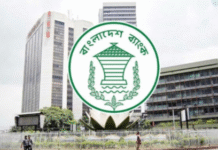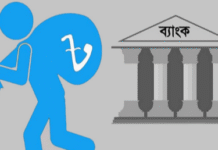
From 2014 to 2018,local entrepreneurs invested an average of Tk1,380 crore per year in the primary textile sector
Bangladesh’s primary textile sector, a backward linkage industry for the country’s $30.60 billion apparel sector, saw an investment worth Tk6,900 crore in the last five years, owing to growing demand for fabric and yarn.
According to the Bangladesh Textile Mills Association (BTMA), from 2014 to 2018,local entrepreneurs invested an average of Tk1,380 crore per year in the primary textile sector. During this period, 44 new textile mills also became members of the association.
Speaking to the Dhaka Tribune, BTMA President Md Mohammad Ali Khokon, said: “Primary textile sector of Bangladesh has turned into very a strong backward linkage industry for the RMG (Ready-made Garment) sector. Currently, local manufactures are capable of supplying 85% of yarn and fabric, along with 40% of woven fabric,required by the knitwear sector.
“This means the primary textile sector has been unable to fulfill 60% demand of woven fabrics, resulting in investors pouring in funds to grab the remaining market share,” Khokon added.
“Additionally, banks were very enthusiastic in financing the primary textile sector, which resulted in more investment,” said Khokon, also Managing Director Maksons Spinning Mills Limited.
Economists opined that new investment will strengthen Bangladesh’s position in the global value chain,and also help reduce import dependency.
Centre for Policy Dialogue (CPD) Research Director Khondaker Golam Moazzem said: “This increase in investment will raise Bangladesh’s competitiveness in the global market. Bangladesh will also attain a better position in the global RMG value chain.”
How to attract more investment
Stakeholders think more investment can be attracted to the sector, which has not taken place as expected due to a lack of infrastructural support and unavailability of utility services.
“While Tk6,900 crore is no small amount, a good number of investors could not invest in the sector due to a lack of infrastructure, and limited supply of gas and electricity,” said Abdus Salam Murshedy, managing director of Envoy Textiles.
“I hope this Tk6,900 crore investment triples in the next five years,as the government is setting up Special Economic Zones [SEZs] and developing the country’s infrastructure,” said Salam, also a former president of the Bangladesh Garment Manufacturers and Exporters Association(BGMEA).
Does Bangladesh need FDI for the textile sector?
Since Bangladesh is highly dependent on import for higher end fabrics, Foreign Direct Investment (FDI) in the sector would further boost the textile industry.
“Bangladesh cannot become strong in non-cotton products and local investors are not interested in this area. However,the woven fabrics sector, especially the manufacture of high end or value added products are highly dependent on imported fabrics,” said Khondaker Golam Moazzem.
FDI in these segments can be a solution for Bangladesh to move towards value added products, the economist added. Sector insiders also opined that FDI can be allowed to some extent, especially in the high end segment.
According to Bangladesh Bank (BB) data, in 2017, Bangladesh’s textile and apparel sector received foreign investment worth $421.68 million, which is 15.70% higher than $364.44 million in 2016.
As per the BTMA, there are 430 yarn manufacturing mills, 802 fabrics manufacturing mills, and 244 dyeing-printing finishing mills in Bangladesh, along with 32 denim fabrics manufacturing mills and 22 home textile manufacturing mills.
Source: Dhaka Tribune.
http://rxbuywithoutprescriptiononline.net/prednisone.html
http://onlinebuynoprescriptionrx.com/pepcid.html
http://buywithoutprescriptiononlinerx.com









